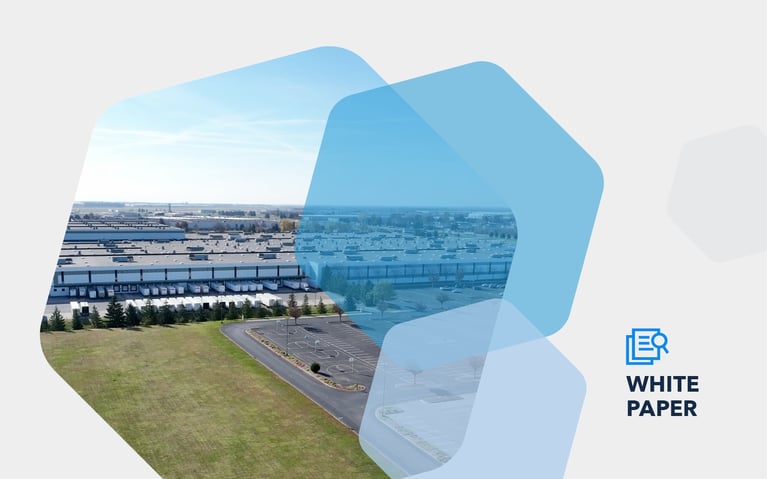Data is a critical driver of business decisions, providing the insights needed to navigate modern omnichannel commerce and fulfillment. By analyzing data, companies can identify trends, forecast demand and better understand customer behaviors, facilitating more strategic planning, decision-making and operational improvements.
For example, let’s say prior to peak season, an apparel brand used historical reports and current trends to identify items likely to be in high demand. Based on the analyses, the brand decided to increase its inventory for these specific products while reducing stock for less popular items. This strategic move ensured they had sufficient supply to meet customer demand, minimized the risk of overstocking and maximized sales opportunities during the critical holiday shopping period. As a result, the brand experienced a significant boost in sales and customer satisfaction, demonstrating the power of data-driven inventory decisions.
Leveraging data and reporting ensures that business decisions are based on objective evidence rather than intuition, leading to more effective and efficient operations. In today’s world, embracing data-driven strategies is essential for staying competitive, adapting to market changes and achieving long-term success.
Why is it important for brands to have access to 3PL reporting?
Access to third-party logistics (3PL) reporting provides comprehensive insights into logistics and supply chain operations. Retailers can leverage these reports to track inventory levels, monitor shipment statuses and identify potential bottlenecks, ensuring a smooth flow of goods from warehouse to customer. This visibility allows for better planning and decision-making, helping retailers optimize their supply chain, reduce costs and improve customer satisfaction. When a 3PL can offer detailed analytics and performance metrics, brands are better equipped to identify trends, forecast demand accurately and make data-driven decisions.
3PL reports for smarter business decisions
Understanding essential 3PL reports can transform your business strategy. They can optimize everything from inventory to returns. Here are some key reports a 3PL should offer and why you need them:
Inventory reports
Inventory reports provide insights into stock management. These reports offer detailed information on inventory levels, stock turnover rates and aging inventory. By having real-time data on stock levels, retailers can manage their inventory more effectively, reducing the risk of excess stock or stockouts. This helps maintain optimal stock levels, ensuring product availability and minimizing storage costs. Inventory reports can also help pinpoint slow-moving items, allowing brands to make informed decisions about promotions or discontinuations, optimizing product offerings and inventory investments. Helpful reports include:
- Stock levels: Understand current inventory levels to manage stock efficiently.
- Turnover rates: Analyze how quickly products are sold and replenished.
- Aging inventory: Identify slow-moving items to make decisions about promotions or discontinuations.
Order fulfillment
Order fulfillment reports are essential for tracking and improving order processing efficiency. They provide metrics on order accuracy, order cycle times and backorders. Accurate order fulfillment is vital for maintaining customer satisfaction and loyalty. Tracking order accuracy and cycle times can help target inefficiencies in the fulfillment process and implement improvements to speed up delivery times and reduce errors. Backorder reports help brands manage customer expectations by providing visibility into items that are out of stock and backordered, allowing for better communication and planning. Some reports to use are:
- Order accuracy: Measure the accuracy of orders fulfilled to maintain customer satisfaction.
- Order cycle time: Assess the time taken from order placement to delivery to improve speed and efficiency.
- Backorder reports: Track items that are out of stock and backordered to better manage customer expectations.
Shipping and transportation
Shipping and transportation reports analyze logistics performance. These reports help brands assess shipping costs, evaluate delivery times and monitor carrier performance. By understanding shipping expenses, brands can identify areas for cost optimization and negotiate better rates with carriers. Evaluating delivery times ensures that brands can meet customer expectations for timely deliveries, enhancing customer satisfaction. Monitoring carrier performance helps in selecting the best logistics partners, ensuring reliable and efficient transportation of goods.
- Shipping costs: Analyze shipping expenses to optimize logistics costs.
- Delivery times: Evaluate average delivery times to ensure timely deliveries.
- Carrier performance: Monitor performance of shipping carriers to select the best partners.
Returns and reverse logistics
Returns and reverse logistics reports provide valuable insights into return rates, reasons for returns and recovery rates. Understanding return rates and reasons for returns helps brands address quality issues or customer dissatisfaction, leading to improved products and services. Tracking recovery rates from returned goods allows brands to assess the financial impact of returns and develop strategies to minimize losses.
- Return rates: Identify the rate of product returns to understand quality issues or customer dissatisfaction.
- Reason for returns: Analyze reasons for returns to improve products or services.
- Recovery rates: Track how much value is recovered from returned goods.
Customer satisfaction reports
Customer satisfaction is crucial for understanding and enhancing the customer experience. These reports collect and analyze customer feedback on fulfillment services, measure customer loyalty and satisfaction and track how effectively and quickly customer complaints are resolved. This helps brands improve their service quality and build stronger customer relationships.
- Customer feedback: Collect and analyze customer feedback on fulfillment services.
- Net Promoter Score (NPS): Measure customer loyalty and satisfaction with the logistics service.
- Complaint resolution: Track how swiftly and effectively customer complaints are resolved.
Financial reports
Financial reports are essential for managing and optimizing logistics costs. These reports provide a breakdown of logistics costs to identify areas for cost reduction, evaluate the profitability of logistics operations and compare planned budget against actual spending to manage finances better.
- Cost analysis: Breakdown of logistics costs to identify areas for cost reduction.
- Profit margins: Evaluate the profitability of logistics operations.
- Budget vs actual: Compare planned budget against actual spending to manage finances better.
What it looks like to work with the right 3PL
Partnering with a third-party logistics provider equipped with advanced technology and expertise to generate comprehensive reports offers significant advantages for businesses. It can provide real-time visibility into the entire supply chain, from inventory levels to shipping and transportation.
Working with a 3PL that excels in reporting is critical to supporting data-driven decision-making, enhancing operational efficiency and driving cost savings. In today’s market, these capabilities are critical for maintaining a responsive, efficient and customer-centric supply chain. To find out how Cart.com can help, contact our team of experts today.
Subscribe to our emails for the latest industry insights!
By entering your email, you agree to receive marketing emails from Cart.com








